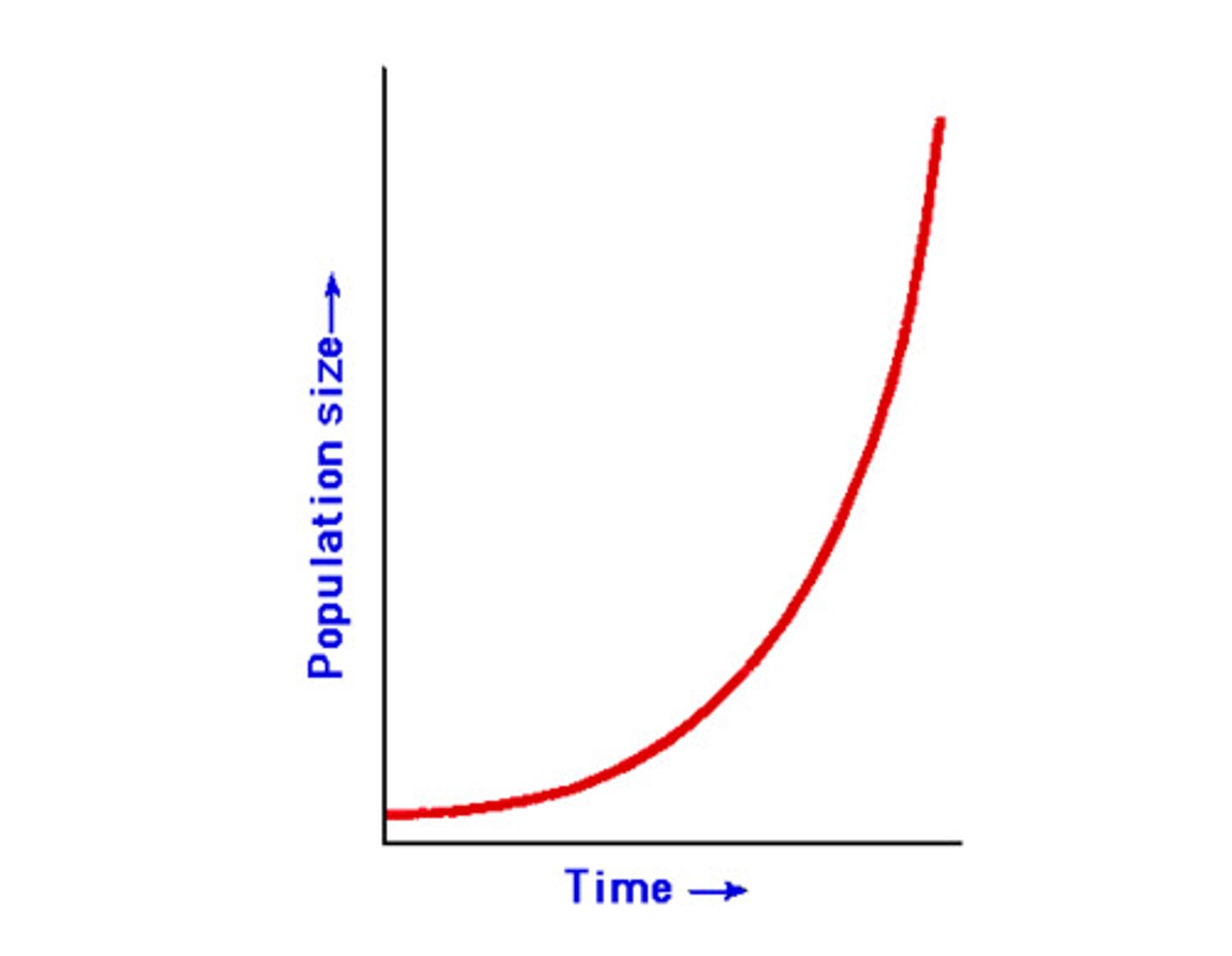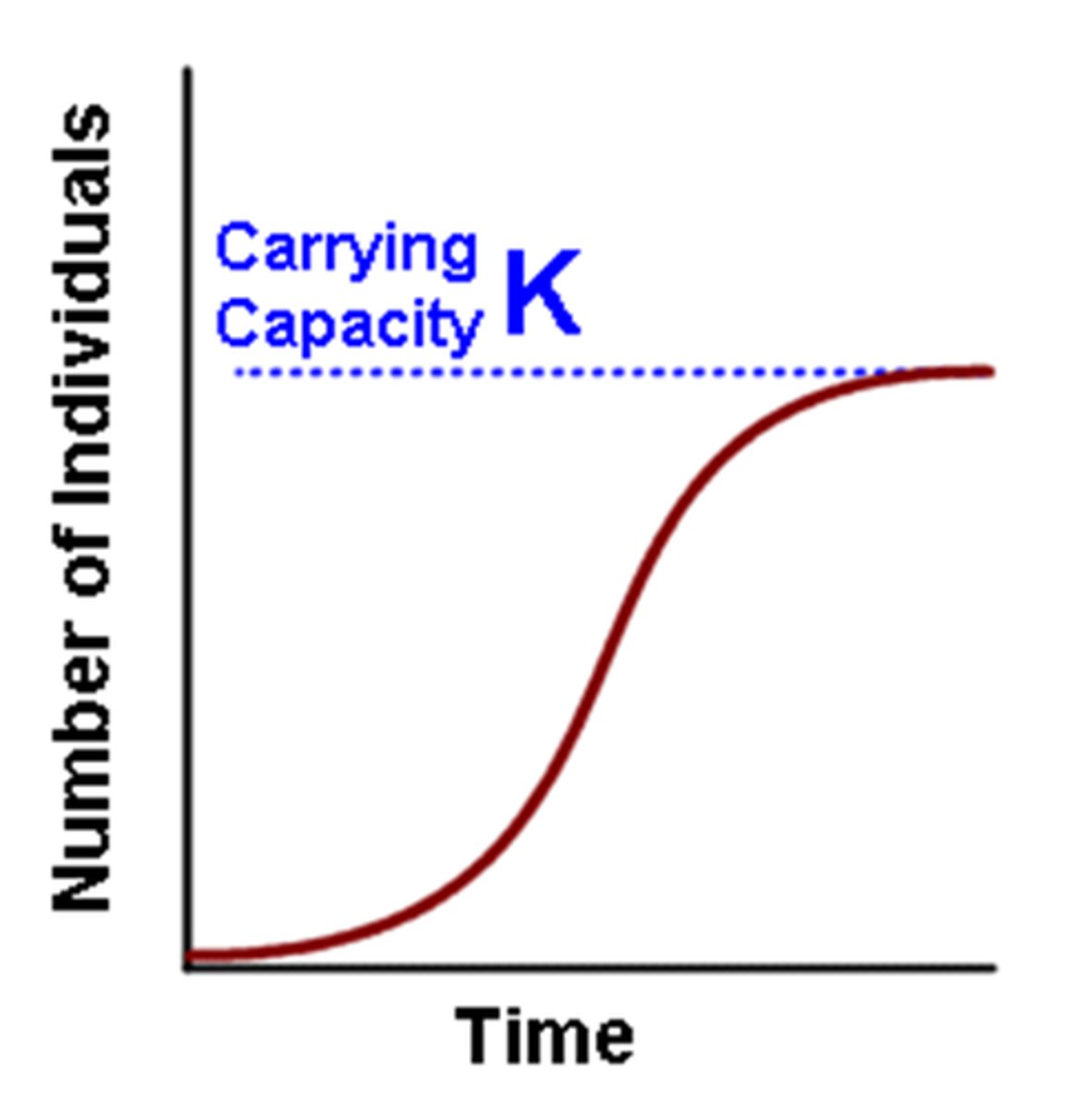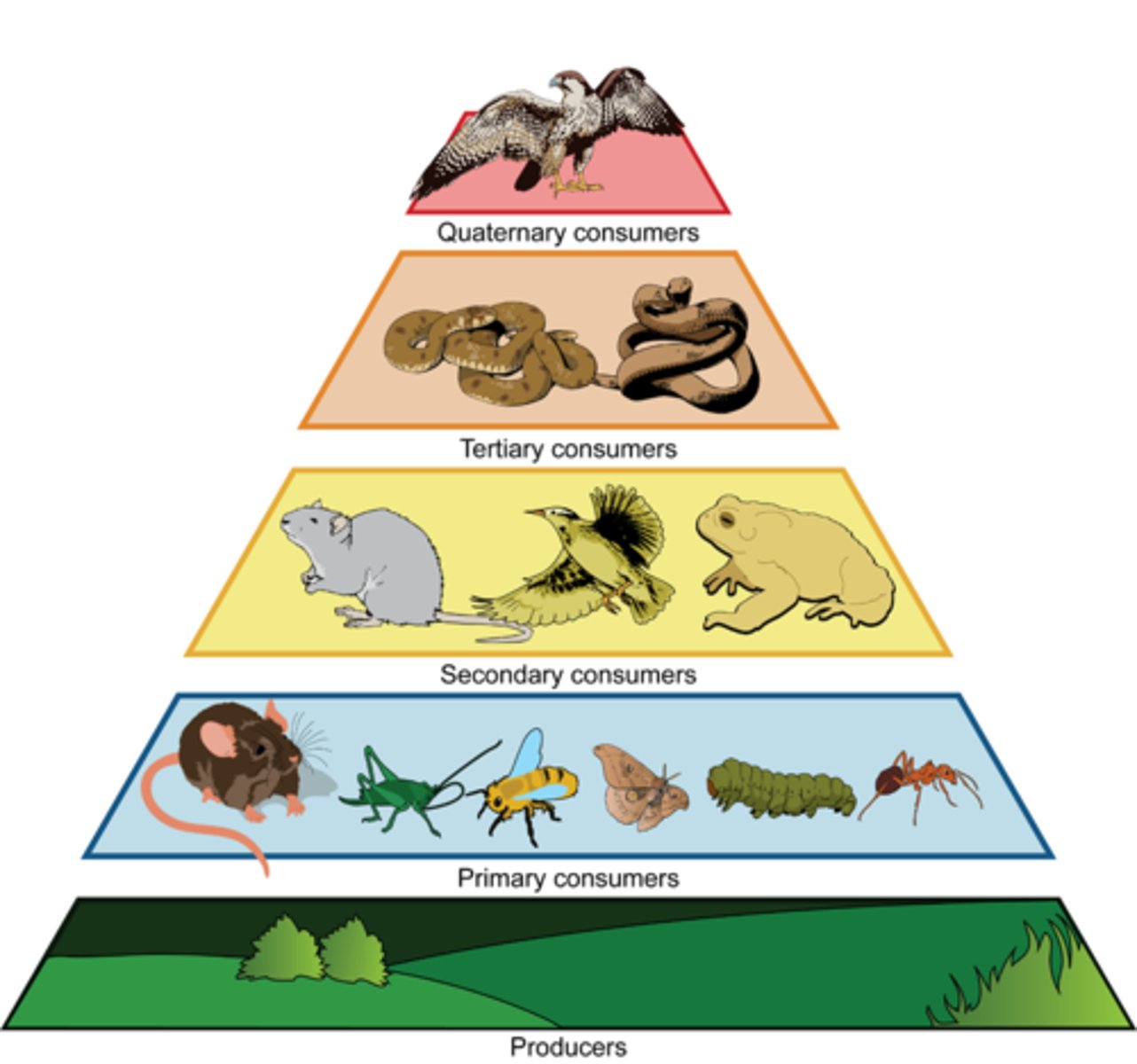Biology 101 Chapters 35, 36 & 38 Population Ecology
1/50
There's no tags or description
Looks like no tags are added yet.
Name | Mastery | Learn | Test | Matching | Spaced |
|---|
No study sessions yet.
51 Terms
Ecology refers to
- the scientific study of interactions within and among different species and their environment
Population ecology
- studies the changes in population size and the factors that regulate populations over time
Population ecologist
- describes a population in terms of its size, age structure, or density.
- they also study population dynamics, the interactions between biotic and abiotic factors that cause variation in population size.
Population refers to
a group of individuals from the same species living in a particular area at a specific time
Species refers to
group of organisms with the capacity to interbreed in nature and produce fertile offspring
Communities refers to
all species of life living in a specific geographic region
Ecosystems refers to
interaction between communities and their nonliving environmental factors
Biosphere refers to
entire collection of Earths ecosystems, largest unit of life
How can population growth be analyzed?
- Exponential growth
- Logistic growth
Exponential growth
- J-shaped
- slow growth followed by rapid growth, often a sharp drop due to natural environmental constraints
- A population may also change from exponential to logistic

Logistic growth
- S-shaped
- slow growth followed by rapid growth, then growth stops at a certain level (K) due to environmental resistance (predators, decreased food, resources, accumulation of toxic waste, etc.)
- This limit is known as the carrying capacity (K): This is the capacity of the environment to sustain a specific population density

Growth Rate
- difference between birth and death growth rates in a period of time (r)
Female Fertility Rate
- > 2.1 means the population is growing
What is the U.S. female fertility rate
1.8 (shows population is not growing since it is less than 2.1)
What is the current human world population?
8.2 billion
What is the current U.S. population
about 341 million
Methods to analyze life histories
1. Survivorship curves
2. Population pyramids
3. Female fertility
4. World human population
5. Ecological footprint
Survivorship Curves
- used to calculate death rates in various age cohorts (groups) in a human population
- Purpose: life insurance companies set premiums and make other business decisions
Population Pyramids
- depict the distribution of age groups within a population
- the proportion of the population that is or will be of reproductive age (15 to 45 years) influences the future growth of that population
Female Fertility
-contributes to human population; number of children born to each woman
- other factors involved in human population: improved sanitation, increased food supply, advancements in medical care and research and immigration
World Population
- growth is fastest in less developed then well-developed countries
Ecological Footprint
- considers the amount of land, food, water, fuel and other things consumed per person
- the ecological footprint of India is much smaller than that of Japan or Norway
What are species interactions
1. Ecological Niche
2. Interspecific Competition
3. Mutualism
4. Predation
5. Herbivory
6. Parasitism
Ecological Niche
- total use of biotic and abiotic environmental resources
Interspecific Competition
- Competitive exclusion principle: resources will be used until one of the species becomes extinct, or there may be resource partitioning by character displacement
- This is one of the species that uses only part of the resources available
- neither benefits
Mutualism
- both get a benefit
- ex. lichen
Predation
- one species eats the other, potent selective force.
- Defense mechanisms: cryptic coloration, warning coloration (yellow, red, or orange combined with black) tells predators of undesirable consequences.
-one benefits the other does not
Herbivory
- Consumption of plant parts or algae by animals.
- Defense mechanisms: thorns, spines, chemical toxins
- one benefits the other does not
Parasitism
- One organism gets the benefit (parasite) and the other is harmed (host)
- wants to keep host alive
- ex. dog and flea
Trophic Structure
feeding relationships among the various species in a community
Autotrophs
- 1st Trophic level
- obtain energy from inorganic sources
Heterotrophs
- 2nd - 5th trophic level
- obtain energy from preformed organic molecules; all consumers
What is a food chain
- is the sequence of food transfer between trophic levels
- food webs represent a more complete feeding relationship in the community because it shows feeding form the same trophic level (branching)
Food Web Levels
1. First Trophic level: producers
2. Second trophic level: primary consumers (herbivores, omnivores [nutrition from both plants and animals' origin)
3. Third trophic level: secondary consumers (herbivores predators: carnivores, omnivores)
4. Fourth trophic level: tertiary consumers (carnivores)
5. Fifth trophic level: quaternary consumers (carnivores)

Detritivores refers to
- decomposers feed on detritus such as remains of dead organisms or cast-off material from living organisms
- breaks down organic material into inorganic components that can be recycled through the ecosystem (fungi, bacteria, termites)
- example saprotrophs
Keystone species refers to
- a species whose impact on its community is much larger than its total mass or abundance indicates
- this species occupies an ecological niche that holds the rest of the community in place
Ecological pyramids
- the biomass transferred at each successive step along food chain tends to be only about 10% of the biomass of the organisms consumed.
- as a consequence of this inefficiency, food chains rarely exceed four levels.
What is the main reservoir of Carbon
the atmosphere
What is the main reservoir of phosphate
is in the soil
What is the main reservoir of nitrogen
the atmosphere
Chemical Cycling
- essential chemicals cycle through ecosystems
1. The Carbon Cycle: CHON
2. The Phosphorous Cycle: DNA, RNA, & ATP
3. The Nitrogen Cycle: Proteins & Nucleic acids
Diverse Environments (Abiotic factors)
1. Energy source
2. Temperature
3. Water
4. Inorganic nutrients
5. Aquatic environment only
6. Terrestrial environment only:
Acclimation refers to
- ability to gradually (in days or weeks) reverse physiological adjustments based on environmental changes.
- example: response to cold weather
Marine Biomes
1. Intertidal zone
2. Continental shelf
3. Benthic realm
4. Pelagic realm
5. Photic zone
6. Aphotic zone
Intertidal zone
- where the ocean meets land
- low to high tide
-Photic zone
Pelagic realm
- open water
- includes continental shelf and benthic realm
Continental shelf
- shallow
- Photic zone
Effects of climate on terrestrial biomes
1. Global air circulation patterns create deserts and rain forest: due to the round shape of the earth (warmer in the equator, colder in the poles)
2. Local topography influences weather:
3. Ocean currents affect weather:
Forest
- High precipitation
- High abundance of trees
- ex. tropical rain forest, deciduous (broadleaf), coniferous (taiga & evergreen)
Grasslands
- High population of grasses & short shrubs
- ex. chaparral (Mediterranean), Savanna (Steppes), Temperate grasslands (prairies), Tundra
Deserts
- Low precipitation
- ex. hot and cold deserts (polar and alpine)